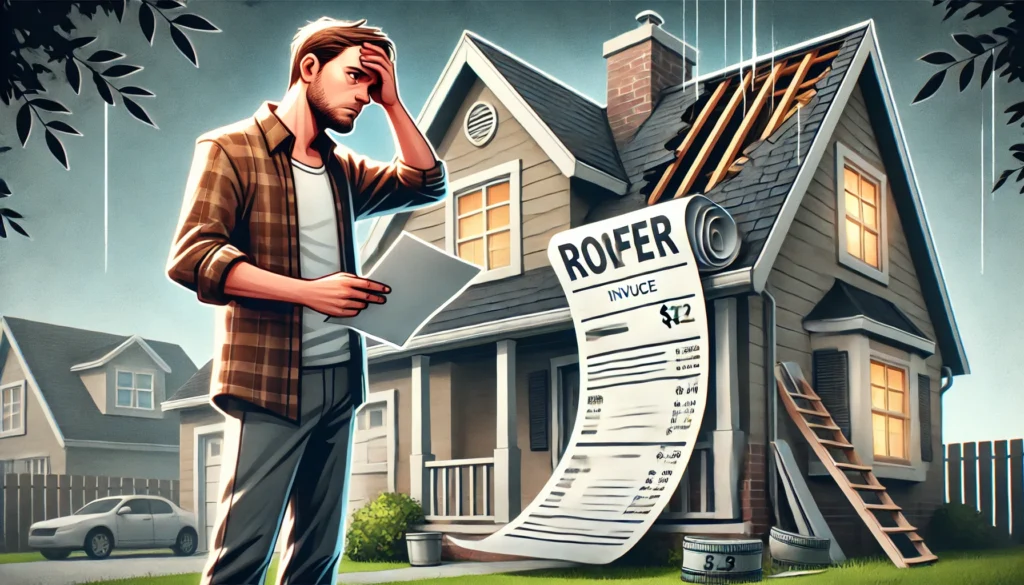In recent years, homeowners across the country have been grappling with a noticeable increase in residential roofing prices. Whether you’re planning to replace your aging roof or installing one on a new home, the rising costs can have significant implications on your budget and long-term planning. But what’s driving these price hikes, and how can you, as a homeowner, navigate this changing landscape?
Why Are Roofing Prices Increasing?
Several factors contribute to the rising costs of residential roofing, many of which are beyond the control of homeowners and roofing companies alike:
- Material Costs: The prices of roofing materials such as asphalt shingles, metal, and wood have seen steady increases. This is due to a combination of global supply chain disruptions, higher demand, and the rising cost of raw materials. For example, asphalt, a key component in many roofing systems, has seen price hikes due to fluctuations in oil prices and increased production costs.
- Labor Shortages: The construction industry, including roofing, is experiencing a shortage of skilled labor. This shortage drives up wages, which in turn increases the overall cost of roofing projects. As more seasoned professionals retire and fewer young workers enter the trade, this trend is likely to continue.
- Increased Demand: With more extreme weather events and aging housing stock, there is a growing demand for roofing services. This demand can push prices higher, particularly in regions affected by storms or natural disasters where the need for repairs or replacements is urgent.
- Regulatory Changes: New building codes and regulations often require higher-quality materials and more complex installation processes. While these changes are designed to improve the safety and longevity of roofing systems, they can also add to the overall cost.
The Impact on Homeowners

As roofing prices rise, homeowners face several challenges:
- Budgeting Concerns: A new roof is a significant investment, and rising prices can strain household budgets. Homeowners may find that they need to adjust their financial planning, save more, or explore financing options to afford the cost of a new roof.
- Delaying Repairs: Higher costs might tempt some homeowners to delay necessary roof repairs or replacements. However, this can be a risky strategy, as a damaged or aging roof can lead to more severe and expensive issues down the line, such as leaks, mold, or structural damage.
- Home Value Considerations: On the flip side, investing in a new, high-quality roof can increase your home’s value and curb appeal. As roofing becomes more expensive, the value of a well-maintained, durable roof may also rise, making it a worthwhile investment for those planning to sell their homes.
- Energy Efficiency and Long-Term Savings: While the upfront cost of a new roof may be higher, modern roofing materials often offer better energy efficiency, which can lead to long-term savings on heating and cooling bills. Homeowners should consider these potential savings when evaluating the cost of a new roof.
Navigating the Rising Costs
While rising roofing prices are a concern, there are strategies homeowners can use to mitigate the impact:
- Get Multiple Quotes: Don’t settle for the first estimate you receive. Getting multiple quotes from reputable roofing contractors can help you find the best price without sacrificing quality.
- Consider Financing Options: Many roofing companies offer financing plans to help spread out the cost of a new roof. Explore these options to see if they make sense for your financial situation.
- Prioritize Quality: While it may be tempting to choose the cheapest option, investing in high-quality materials and workmanship can save you money in the long run by reducing the need for repairs and extending the life of your roof.
- Stay Informed: Keep an eye on market trends and material costs. Understanding the factors driving price increases can help you make informed decisions about when and how to proceed with your roofing project.
Conclusion
Rising residential roofing prices are a reality that homeowners must face, but with careful planning and smart decision-making, the impact can be managed. By staying informed, exploring your options, and investing wisely, you can ensure that your home remains protected and that your roofing investment pays off in the long run. Whether you’re dealing with the need for an immediate roof replacement or planning for the future, understanding these trends is the first step in navigating the evolving landscape of residential roofing.




